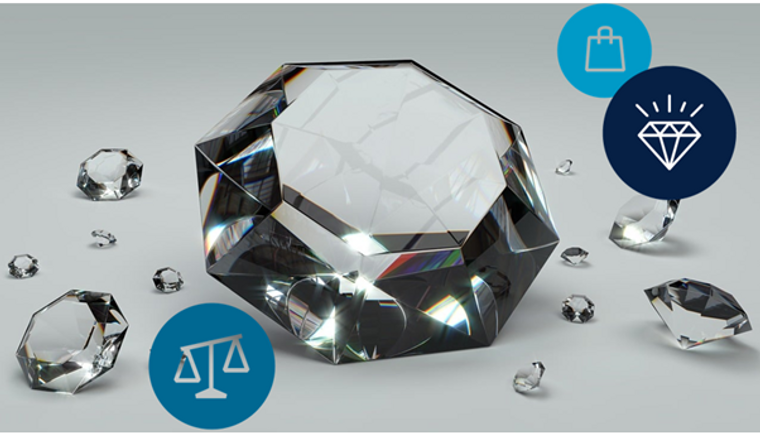
Laboratory-grown diamonds may sparkle just like their naturally formed counterparts, but when it comes to advertising, clarity is key. When running your campaign, you should ensure that you use appropriate, clear and prominent qualifiers so that consumers are fully aware, from the outset, that your products are laboratory-grown. Find out how to ensure your advertising is rock solid with our top tips and advice.
Every detail is a gem
Laboratory-grown diamonds can be expensive with potential for significant financial detriment if consumers are not aware of their origin. It is, therefore, essential that advertisers describe their products accurately.
Rule 3.1 of the CAP Code states that ads must not mislead by omitting material information, so advertisers must make clear the distinction between laboratory-grown products and their naturally formed counterparts.
The ASA has ruled on two occasions that using the word “diamond” in isolation to describe laboratory-grown diamond products is unacceptable. Both rulings made clear that when describing products that are laboratory-grown or synthetic diamonds, the term “diamond” should always be accompanied by a qualifier, such as “synthetic”, “laboratory-grown” or “laboratory-created”, to ensure transparency about the nature of the product.
The use of appropriate qualifiers should be clear, prominent and consistent throughout your copy. In this ruling, the ASA noted that consumers could go through the entire process of buying a laboratory-grown diamond, from homepage to completion of the purchase, without any explicit indication that the diamond was synthetic - and ruled that this was problematic.
Cut through the clutter with clarity
Advertisers should ensure that their copy unmistakeably conveys that their diamonds are laboratory-grown.
The ASA upheld complaints about ads in which the term “carbon neutral diamond” was used to describe a laboratory-grown diamond. It considered such a qualifier to be misleading because it did not communicate to consumers that the product was a laboratory-grown diamond, rather than a naturally formed diamond.
Similarly, the ASA ruled against an advertiser who referred to their laboratory-grown diamonds as “mined” and emphasised their provenance as “being from the sky.” This created ambiguity around whether the diamonds were naturally occurring or synthetic and the claims “diamonds,” “diamonds made entirely from the sky,” and “Skydiamond” were deemed to be misleading.
The sparkle’s the same – the story isn’t
Laboratory-grown diamonds have a place in today’s modern jewellery landscape, however, their origin and production process set them apart from mined stones in a way that is likely to be material for consumers, and so this distinction must be reflected in advertising.
The FAQ page of an advertiser’s website contained the claim “each Skydiamond is a perfectly formed real diamond”. The ASA considered that it was misleading to describe a synthetic diamond as a “real diamond”.
The term “real” carries strong connotations of authenticity and geological origin, and its use in this context risks blurring the line between laboratory-grown and naturally formed diamonds. Advertisers should therefore avoid using the term “real diamond” to describe their laboratory-grown products and instead opt for clear and accurate qualifiers to ensure transparency and prevent consumer confusion.
For more facet-nating insights and bespoke advice on your laboratory-grown diamond advertising, do not hesitate to contact our Copy Advice team who can assist you in polishing your campaigns to perfection.
More on
-
Keep up to date
Sign up to our rulings, newsletters and emargoed access for Press. Subscribe now.


